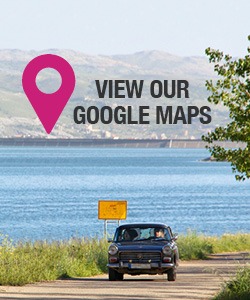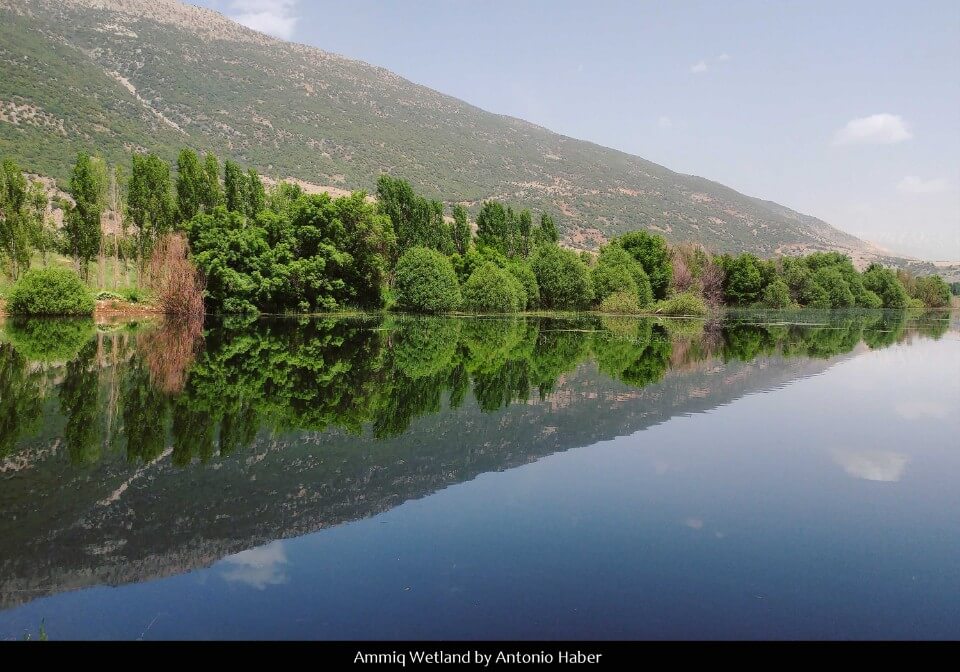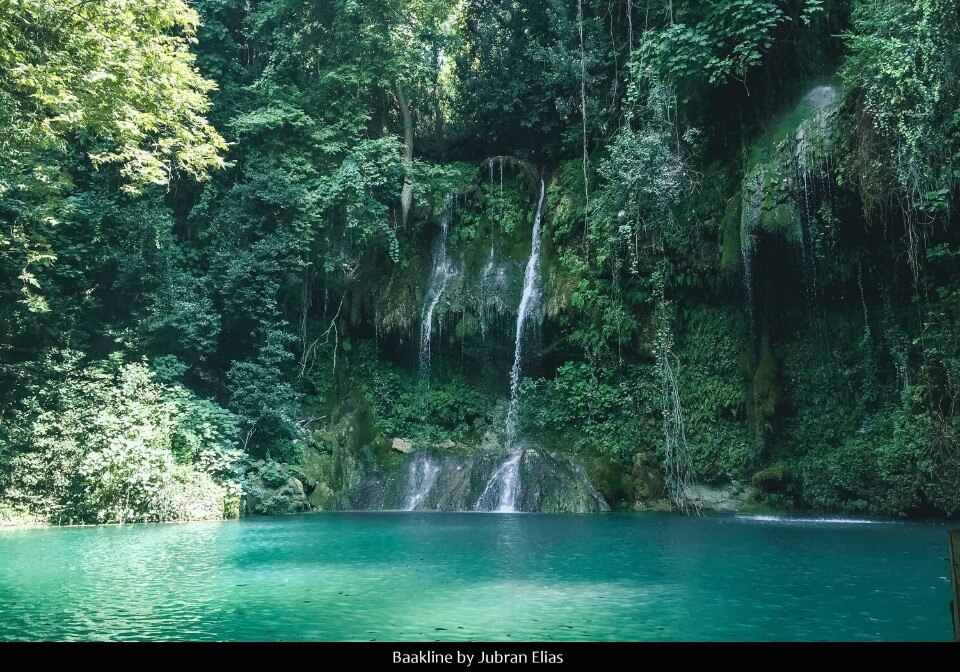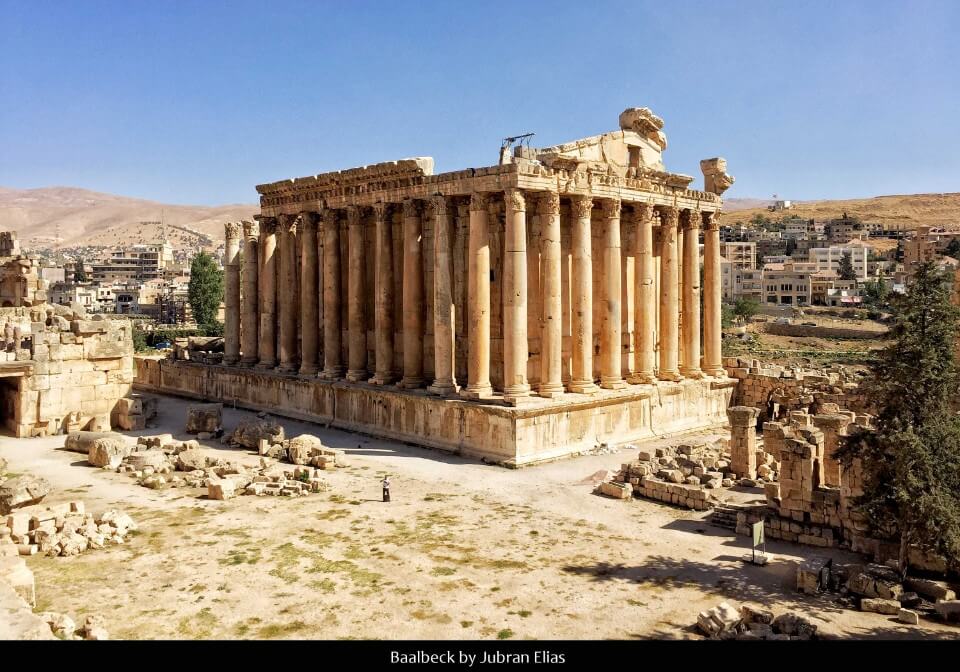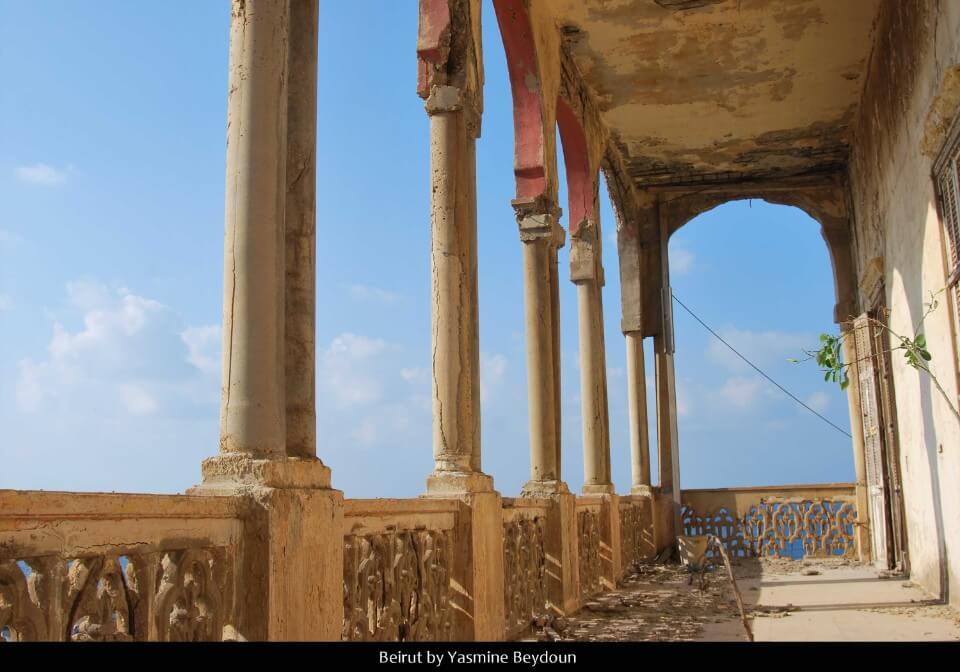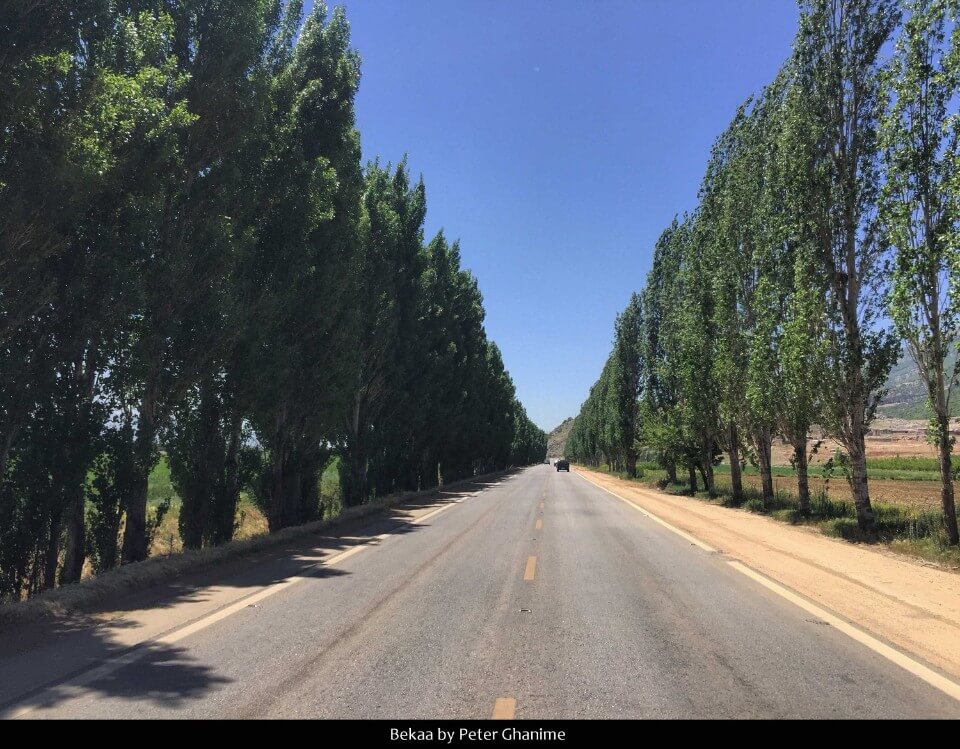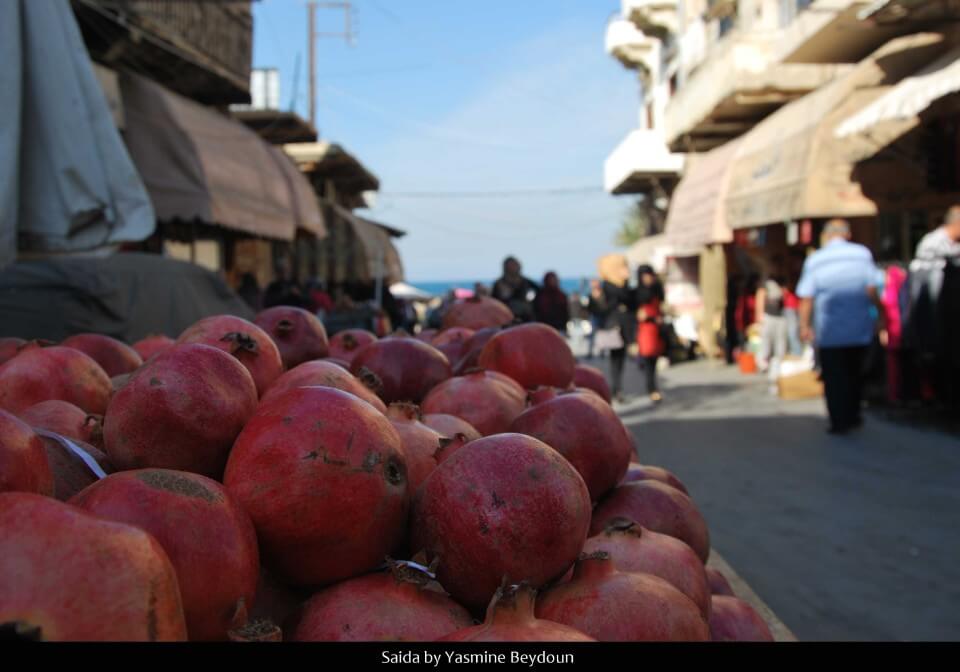On the way to the valley of Bisri, also known as Nahr El Awali, beautiful landscapes and stories from the surrounding villages unfold. The journey reveals a rich region in need of further exploration; a calming landscape in which to hike in or bike through when you’re in search of a break from everyday life. A drive through the area’s rolling hills offers spectacular views from whichever of its multiple entrances you access the valley from: Iqlim el Kharoub in the Shouf, the mouth of Nahr El Awali at the coast, Saida or Jezzine.
If entering the valley from Al Awali River, on your way to Bisri valley, endless rows of carob trees interrupt your field of sight in Alman and Joune villages, until you reach the hill’s summit. But in the openings of those green borderlines you can glimpse the puzzled landscape, made up of mosaics of olive groves, fruit tree orchards and the abandoned terraces of Eshmun valley.
Make your first stop the Temple of Eshmun, also known as Bustan El Sheikh. Built in the 7th century BC, the temple was once a worship site dedicated to Eshmun, the Phoenician God of healing. It is believed to be connected to the nearby Temple of Marj Bisri. Nowadays, the temple features a wealth of different architectural styles influenced by the first Persian empire as well as Greek and Roman empires.
In Joune, ruins of the castle of Lady Hester Stanhope (1773-1839) still stand on a north-facing hill. The British explorer of the Near East was proclaimed the Queen of Palmyra by the Bedouins, before becoming a renowned prophet in the Druze region in Lebanon. After Joune, visit Deir El Moukhalles (the Monastery of Saint Savior), surrounded by stone pine forests and vineyards. The monastery was founded in 1733 and has one of the earliest printers and rare manuscripts. Visit its beautiful old church and marvel at the collection of icons from another time. The priests have numerous stories to tell such as that of the Well of Kuzma. It was named after an atheist from Dyar Baker, on the border of Turkey, who dug the well up in 1775. Kuzma later converted to Christianity and continued the rest of his life as a priest in the monastery. In the same area, don’t miss the Deir Saydet El Bechara (Convent of Lady of Annunciation, Sister Najwa Mehanna, 03 164931). Dating back to 1737 and famous for the annual Holy Cross celebration on 13 September, it offers cheap accommodation.
Only after a long and scenic drive through the valley will you spot Bisri village, located where the road ends and an old church dating back to 1252 is located. The small village, 60km from Beirut and at 400m altitude, overlooks farmlands and offers a beautiful natural habitat. Here you can see colorful birds such as bee-eaters, along with thrushes, great tits and blackbirds and hear the corn bunting jangling their keys. In private gardens, traditional flower varieties can still be seen such as snapdragon, roses and spur-valerian. Continuing on through the valley you will see the remains of the Temple of Marj Bisri; four black granite columns and decorative stone blocks, along with the historical church of Saint Moses El Habchi and the remains of Saint Sophia’s Monastery.
While rambling through the valley, you will come across Deir Saydet El Intikal (Monastery of Our Lady of Assumption), which also offers accomodation. Built in 1733 on the farmlands of Kashkaya, the monastery’s land expanded over the farmland of Kessaret el Zaaroura and Debaghah and includes a church from 1790. Pine forests border the road down to the miraculous Church of our Lady of Rugged Land (1739). It was damaged by the war and rebuilt many times.
At the end of the day, take the exit of Mazraet el Matehne down to the coast to Saida and end your journey with a coffee fronting the Mediterranean Sea.
Where to eat
Plenty of restaurants in the area offer traditional Lebanese mezze such as Tal El Qamar (71 898921) in Joune, Istirahat El A’ilat (03 411262) in Bisri Valley and Vall Vai (03 764972), if you arrive from the Saida road.
What to buy
The convents sell traditional local products such as rose water and orange flower water, water of sage and oregano, syrups such as rose, sour orange and mint, a variety of pickles, olives and olive oil, carob molasses, local wine and arak, labneh, zaatar mix for manousheh, oregano and sumac.
Photos: Elsa Sattout
Loading

